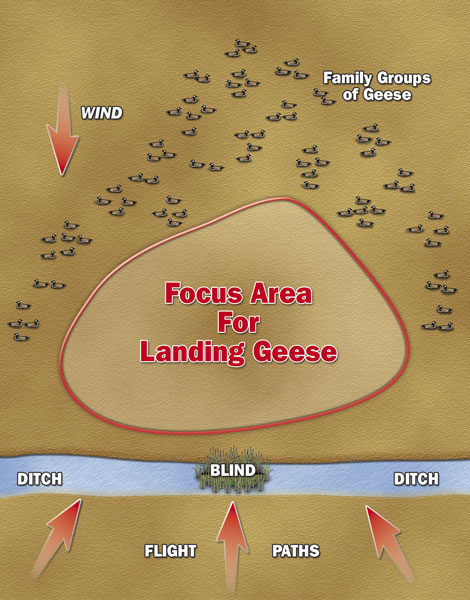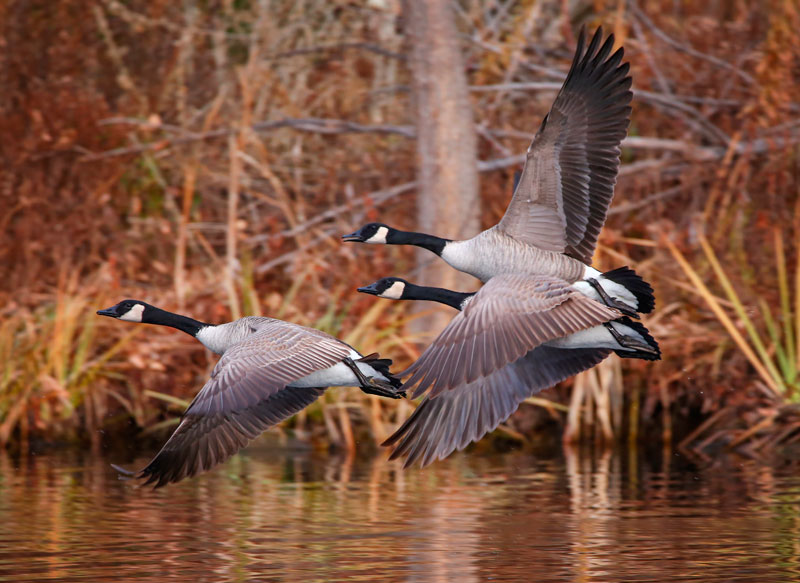I was invited on a hunt for resident Canada geese early this fall and had an excellent hunt, even though it didn’t start out that way. We were only a couple of weeks into the season, but the geese were already wary and very reluctant to come into shooting range. They would see our flags and hear our calls, but they would get to about 100 yards and stall, then only occasionally come on in. Thankfully, we were shooting well and made it a successful hunt, but we vowed to come back the next day and correct whatever had been the issue.
Before leaving, we all walked around the decoys and blind, looking for anything that might be flaring the geese off, but we couldn’t find anything. On the way home we discussed how wary the resident geese had become in just a dozen or so years of hunting. When the season was first opened, they were pretty foolish and readily came to any decoys, which made filling limits easy. We laughingly called them “golf course geese” and didn’t offer them much respect. Now that some of them have weathered a few hunting seasons, there are some wary ganders — even on the golf course.
I suggested taking the time and effort to set decoys as I did when I was guiding and hunting migratory Canada geese during the late 70s and early 80s. Those geese had been shot at from the breeding grounds in Canada all down the east coast. By the time the season opened in December, they had dodged a lot of lead and were plenty wary.
This is a spread designed to take advantage of those wary geese holding back from the spread and looking it over before coming in. It also uses some of their natural flight and landing patterns and tendencies to direct them to certain spots in the decoy spread. This is a field spread, designed to use the big ditches found on many coastal plane farms as temporary blinds, and it may not be as comfortable as setups with more elaborate blinds, but boy, is it effective. We found out the next morning the geese hadn’t caught on to it yet, and we quickly filled our limits, then sat in the blind watching more geese land in our decoys. It has worked well several more times since then
This setup begins with positioning everything relative to the wind. Geese are big birds, and in any wind greater than about five miles per hour, they have to land and take off into the wind. The biggest oddity in this setup is the decoys are placed upwind of the blind, so the geese have to come over the blind to get to them. If geese are hanging up approximately 100 yards from your blind, and the decoys are between you and them, moving your blind to the other side of the decoys will put them within range when they hang up.
Relocating the blind will solve a lot of problems, but the total package isn’t quite that simple. We also do some things in and with the decoy spread to keep the geese from hanging up and to bring them on in.
Canada geese feed and rest in family groups. This isn’t always easy to see when looking at them across a field or from only a slightly elevated position. However, if you could see them from well above and while they are relaxed, you would see some definite grouping. They are much like people at a party, gathering in groups to socialize. With Canada geese, these are family groups.

Family groups may be as few as two geese and rarely more than six. Typically, there is a mating pair and a few young of the year, but there may also be a yearling or two that hasn’t found its mate yet. In this group, there will be feeding geese, resting geese and at least one sentry with it head aloft and alert.
The geese also land in the field in a general boomerang or angled shape. This will vary and may be a little oblong one way or the other according to how the field lies in relation to the wind, but there is always a point into the wind, and the flock tapers back from there. With Canada geese, the later arrivals land either behind or beside the geese that are already in the field and continue building this shape. At slow speeds, like landing or taking off, Canada geese are cumbersome and awkward and will rarely fly over geese sitting on the ground.
By placing the decoys in family groups of two to six and mixing the feeding, resting and sentry heads properly, the geese on the ground will look more natural. When the decoys look more natural, the arriving geese are not as likely to hang up, and you might be surprised how many will come right in, prepared to continue down and land.
The second part of arranging the decoys is to place open pockets in the decoy spread to focus the arriving geese into spots that work best to give hunters the easiest shots. Easy shots and skilled hunters usually result in lots of geese for the freezer.
A final word of advice is to not make elaborate blinds. My favorite is to place a shipping pallet across the bottom of the ditch to keep your feet out of water and sit on a 5-gallon bucket. Pieces of camo material matching the field can be stretched across light frames of PVC tubing that are pained black, brown or green to allow the hunters to duck under something. Everything should be at or below ground level for the best concealment.
This is an effective way to fool wary Canada geese. We first used it over 30 years ago, and it still works well. The geese didn’t hang up, and limits came in a quarter of the time. It isn’t as effective with snow geese, swans and ducks, but it doesn’t hurt.





Be the first to comment